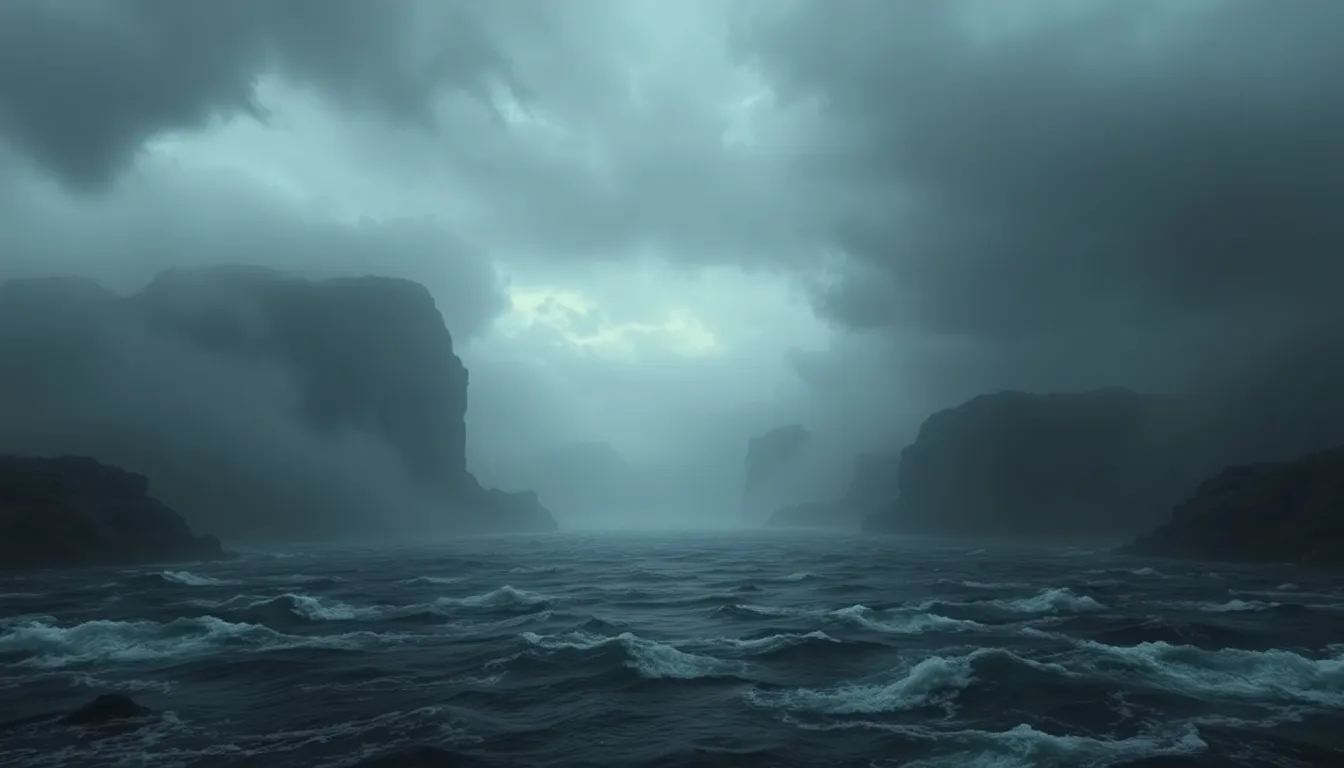The Great Flood: Myths That Challenge Our Understanding of History
I. Introduction
The Great Flood is a powerful narrative that spans across various cultures and religions, often symbolizing rebirth, cleansing, or punishment. From the ancient civilizations of Mesopotamia to the scriptures of the Abrahamic faiths, stories of a cataclysmic deluge have been woven into the fabric of human history. This article aims to delve into these myths and explore their historical implications, shedding light on how they reflect the societies that birthed them.
II. The Great Flood in Religious Texts
Religious texts have long served as the primary sources for flood narratives, each offering unique perspectives and insights.
A. The Biblical account of Noah’s Ark
In the Bible, the story of Noah’s Ark is perhaps the most well-known flood narrative. According to the Book of Genesis, God decided to cleanse the earth of its wickedness by sending a flood, sparing only Noah, his family, and pairs of every animal species aboard the ark. This account highlights themes of divine judgment and mercy.
B. The Epic of Gilgamesh and its flood narrative
Older than the Biblical account, the Epic of Gilgamesh features a similar story where Utnapishtim is warned by the god Ea to build a boat to survive an impending flood. This narrative emphasizes the fragility of human life and the inevitability of death, along with the possibility of immortality through remembrance.
C. Hindu texts: Matsya and the great deluge
In Hinduism, the Matsya Purana describes how the god Vishnu took the form of a fish to save King Manu and the seeds of all species from a great flood, once again reflecting the themes of preservation and divine intervention.
III. Archaeological Evidence of Flooding Events
While myths provide rich narratives, archaeological evidence offers tangible insights into historical flooding events.
A. Historical floods: the Black Sea deluge hypothesis
One of the most discussed theories is the Black Sea deluge hypothesis, which suggests that a catastrophic flooding event around 7,500 years ago may have inspired flood myths in surrounding cultures. This hypothesis proposes that rising sea levels from melting glaciers breached a natural dam, dramatically flooding the region.
B. Geographical evidence: sediment layers and ancient shorelines
Geological studies have uncovered sediment layers and ancient shorelines that suggest significant flooding events throughout history. These findings can be correlated with the timelines of various civilizations, providing a backdrop for their flood narratives.
C. The role of natural disasters in shaping myth
Natural disasters, such as tsunamis and heavy rains, likely influenced the creation of flood myths as societies sought to explain and understand these catastrophic events.
IV. Myths vs. Historical Reality
Understanding the distinctions between mythological accounts and scientific evidence is crucial in examining the Great Flood.
A. Differences between mythological accounts and scientific evidence
While myths often serve as allegorical tales, scientific evidence provides a more concrete understanding of historical events. For example, while many myths depict a singular flood event, geological evidence may point to multiple smaller flooding occurrences.
B. The concept of collective memory in ancient civilizations
Collective memory plays a significant role in how societies preserve their histories. Flood myths may arise from shared experiences of catastrophic flooding, thus embedding these events into the cultural consciousness.
C. How myths evolve and adapt over time
As cultures evolve, so too do their myths. The Great Flood narratives adapt to reflect contemporary values and concerns, illustrating how stories can transform to fit new contexts.
V. Cultural Interpretations of the Great Flood
Flood myths vary widely across different cultures, each offering unique interpretations and lessons.
A. Variations in flood myths across different cultures
- In the Americas, the flood narrative can be found in the Popol Vuh of the Maya, emphasizing themes of creation and destruction.
- In various African cultures, floods are often seen as a cleansing force, purging the land of evil.
B. Symbolism and moral lessons in flood narratives
Many flood myths carry moral lessons, such as the importance of obedience, humility, and respect for nature. They serve as cautionary tales about human hubris and the consequences of moral decay.
C. The impact of geography on flood mythology
The geographical context in which a culture exists heavily influences its flood myths. Societies situated near rivers or coastal areas may have more vivid and varied flood narratives due to their direct experiences with flooding.
VI. The Great Flood in Art and Literature
The influence of the Great Flood extends into the realms of art and literature, where it continues to inspire creativity.
A. Depictions of the flood in ancient art
Ancient art often depicts flood narratives, such as the Assyrian reliefs showing boats and animals, demonstrating the cultural significance of these stories.
B. Literary interpretations across ages: from ancient texts to modern retellings
Flood myths have been retold in various literary forms, from classical literature to contemporary novels, often reinterpreting the themes for modern audiences.
C. The influence of flood myths on contemporary storytelling
Modern films and literature often draw on flood myths to explore themes of survival, morality, and human resilience in the face of disaster.
VII. Psychological and Sociological Perspectives
The Great Flood narratives also hold significance from psychological and sociological viewpoints.
A. The role of fear and catastrophe in shaping human narratives
Fear of natural disasters has shaped human narratives, with flood myths serving as stories of caution and survival.
B. Myths as coping mechanisms for societies facing natural disasters
These myths can function as coping mechanisms, providing explanations for catastrophic events and helping societies process trauma.
C. The significance of shared stories in community identity
Shared flood narratives foster a sense of community and identity, as they are collectively remembered and retold through generations.
VIII. Scientific Perspectives on Flood Myths
The intersection of science and mythology provides a deeper understanding of flood narratives.
A. Geological studies and their findings on ancient floods
Geological research continues to uncover evidence of ancient flooding events, allowing scientists to piece together the history behind flood myths.
B. Climate change and its potential role in historical flooding
Current climate change discussions often parallel ancient flood narratives, as societies grapple with the implications of rising sea levels and extreme weather.
C. The intersection of science and mythology
This intersection challenges us to rethink the relationship between myth and reality, recognizing that both can coexist and inform each other.
IX. Lessons from the Myths of the Great Flood
Flood myths offer valuable lessons relevant to contemporary society.
A. Environmental awareness and sustainability
Many flood narratives emphasize the importance of respecting nature, providing a warning about the consequences of environmental neglect.
B. The importance of preserving cultural heritage
Understanding and preserving these myths contributes to cultural heritage, allowing future generations to learn from past experiences.
C. Using myths to inform modern disaster preparedness
Flood myths can guide contemporary approaches to disaster preparedness, reminding us of the importance of community resilience in the face of natural disasters.
X. Conclusion
In summary, the Great Flood is a profound narrative that transcends cultures and time periods, reflecting humanity’s relationship with nature, morality, and survival. By examining flood myths through various lenses—historical, archaeological, cultural, and psychological—we gain insights into the societies that created them and the lessons they continue to impart. As we move forward, further research into the intersections of these narratives with historical realities will enrich our understanding of both myths and the history they seek to explain.


